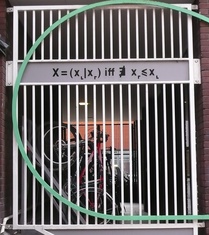
Some "Eurekas" of Mathematics - Part Five
Last updated: Monday August 16th, 2021
Report this blog
Introduction
I'm sure that all of you know about the integers, irrational numbers, and rational numbers. Or at least are familiar with the concepts of the numbers and some examples of each type of number. I would also be willing to guess that most of you have even heard of imaginary numbers as well! But how many of you know about surreal numbers?
History of Surreal Numbers
Perhaps the first big progress into the discovery of surreal numbers was by the Austrian mathematician Hans Hahn when he introduced the concept of the Hahn series in the early 20th century. However, the first true discovery of surreal numbers comes from John Conway in the mid-20th century. Conway constructs and defines the surreal numbers in the first chapter of his book titled On Numbers and Games, though he does not give them a name. The name "surreal numbers" comes from a book by Donald Knuth Surreal Numbers: How Two Ex-Students Turned on to Pure Mathematics and Found Total Happiness, written for a high school aged audience.


What are they?
Now the burning question: what exactly are surreal numbers?
Surreal numbers use a bit of set theory to construct. Any surreal number is actually an equivalence class, { | }, with a set of numbers on the left and right side of the divider. In fact, what was just written, { | }, is equivalent to the number 0. And now we represent this number by writing 0. And we can place it in the brackets to make a new number { 0 | }, which actually is 1. If we placed it on the other side, we would get { | 0 } = - 1. Continuing in this fashion we can get all of the integers (all whole numbers positive and negative).
Now putting a set of numbers on each side of the divider is how we begin to construct the rational numbers as a subset of surreal numbers. For example, { 0 | 1 } is equal to 0.5.
Up to now, we haven't quite seen anything unique about surreal numbers. We've just seen how real numbers can be represented in this different way. But one distinguishing property of surreal numbers is that the number we normally refer to as infinity is included: { 0, 1, 2, 3, ... | }. It is normally referred to as ω. And so we can take ω and do all sorts of arithmetic to create other numbers that aren't real numbers, such as ω + 1, or even 1/ω.
The first chapter of Conway's book where he constructs surreal numbers is titled "All numbers great and small." This is because with surreal numbers, we have both infinite and infinitesimal numbers. So in addition to the real numbers, the surreal numbers add on infinitesimally small numbers throughout the number line, but also infinitely large numbers around the number line as well.

Applications
One application, as seen in Conway's initial book introducing the concept, is in game theory.
However, I'd also like to leave you with a potential application that Donald Knuth himself mentioned in an interview with Numberphile:
"These rules might have been invented before Dedekind's rules and that everybody for hundreds of years had learned about this in school and we considered that this is the way numbers are. Then physicists would have said that this is actually part of the real universe; that these numbers aren't strange but that these are basic. ... There's no reason to think that the universe obeys the laws of real numbers."

But was really amazing! I don't like math, but these blogs are incredible!